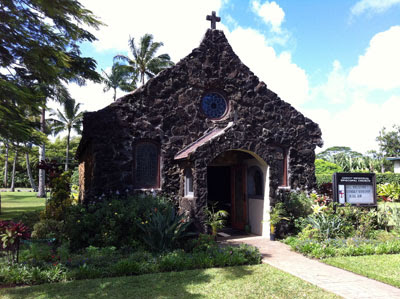 |
| A selection of pendant lockets, mostly Victorian, ranging in price from $55 to $95, except for the pearl and gold locket on the bottom left which is priced at $395. |
Of all the types of jewelry, lockets are by far the most versatile and personal form. Lockets go back in history a long way. In the earliest of times they served as containers for important items, like medicines, and deadly potions, like poison! In Georgian days, lockets were often part of the cadre of accoutrements known as mourning jewelry. These were often black (vulcanite or jet) or black enamel on gold. The motifs were very mystical and dark.
 |
| This onyx and carnelian Victorian locket contains a memorial relic, probably ashes ($195) |
Religious uses were common, such as reliquaries, prayer books and saintly images. The Spanish had a tradition of petitioning the saints for miracles using milagros, or trinkets of significance about their particular need. The milagros locket was used in the most special of requests to enclose the item to be placed at the feet of the saint.
 |
| This enameled locket has a complete Stations of the Cross inside. (Not for sale) |
The mourning and memorial jewelry of the Victorian era included lockets of hair, ashes, personal items and images. Photography was relatively common by the second half of the 1800s and miniature hand painted portraits were done by fine artists as well as itinerant folk artists.
 |
| The locket on the left is a reliquary; the one on the right contains a lock of hair. Photos courtesy of Perfect Likeness, Julie Aronson and Marjorie E. Wieseman. (Not for sale) |
By the end of the Victorian era, lockets had become a very romantic symbol. Many were in the shape of hearts. These were expected to be worn near the wearer's heart so that the lovers would be forever close.
 |
| Victorian gold-filled and silver lockets ($65-$85) |
While lockets of gold and silver are most desirable, they have been made of many different materials, from brass and crystal to filigree and enamel, and encrusted with diamonds, pearls and precious stones as well as rhinestones. Many of the late-Victorian and Edwardian era lockets were gold-filled metal, with a base of either silver or brass. While most lockets are in the form of pendants and necklaces, they can also be found on bracelets, rings and brooches, as well as charms and watch fobs.
 |
| Victorian gold-filled watch fob locket ($65) |
 |
| Early 1900s 14k gold and pearl locket ($395) |
 |
| A pair of early- to mid-century locket brooches ($59 each) |
 |
| Lovely enamel decorated and multi-colored gold lockets that show the range of materials and workmanship in lockets of the Arts & Crafts and Art Deco time frame. (Not for sale) |
 |
| Early 1900s brooch locket, gold-filled with seed pearls. Note the multiple, spring loaded places to hold photos and locks of hair ($125) |
Whenever you get an antique or vintage locket, the anticipation of what you will find inside is part of the intrigue. Photos are by far the most common, but finding a hand painted image, a lock of hair, a bit of a relic, or a poem inside is like WOW!
 |
| This locket has no photo, which is true of many that we find. |
 |
| This spectacular leather covered locket has a hand painted miniature portrait inside. Photo courtesy of Perfect Likeness, Julie Aronson and Marjorie E. Wieseman. (Not for sale) |
These are great to collect, as they require very little space, have a broad range of prices and the motifs are as varied as the pebbles in a stream. Most of the lockets shown above are available online. If one you like is not online, please contact us about it.
















Comments
Post a Comment